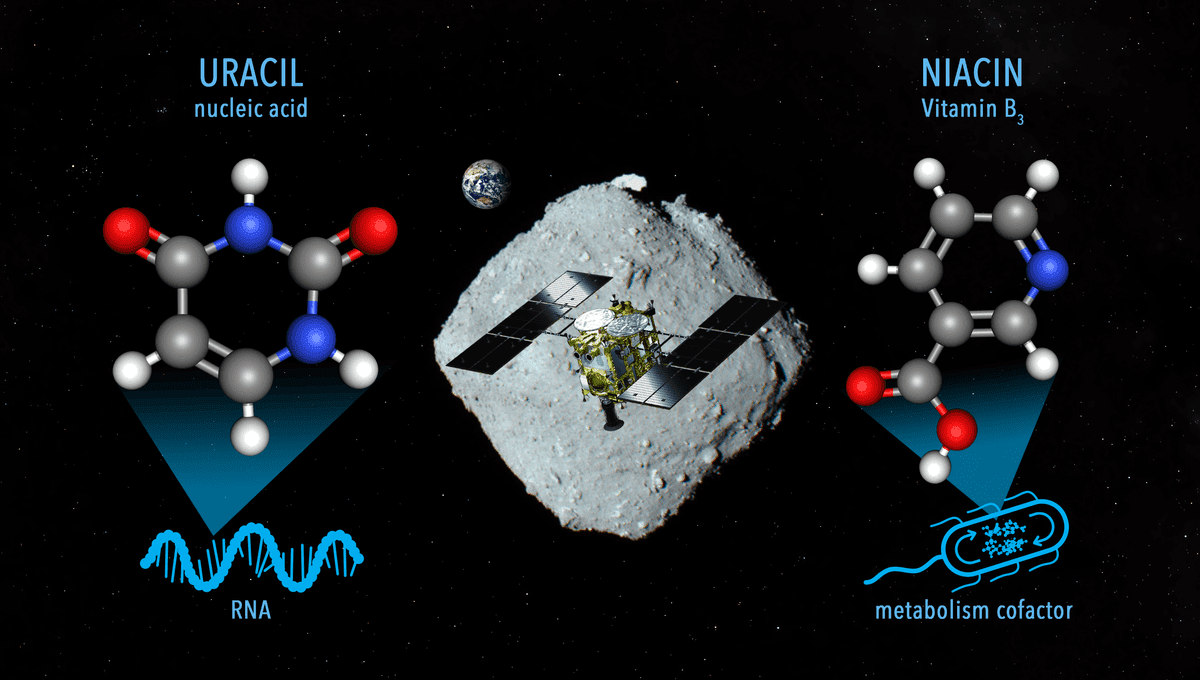
The samples collected by Hayabusa-2 from Asteroid Ryugu continue to reveal new insight into how the building blocks of life might have gotten to our planet. Scientists now report the discovery of niacin (also known as Vitamin B3) as well as uracil: one of the four nucleotide bases that are found in RNA, a molecule used by all living organisms to function.
“We found uracil in the samples in small amounts, in the range of 6–32 parts per billion (ppb), while vitamin B3 was more abundant, in the range of 49–99 ppb,” lead author Associate Professor Yasuhiro Oba at Hokkaido University, said in a statement. “Other biological molecules were found in the sample as well, including a selection of amino acids, amines and carboxylic acids, which are found in proteins and metabolism, respectively.”
Hayabusa-2 collected different samples, and the team found differences in the concentration of uracil between the two they analyzed. They hypothesize that cosmic rays or ultraviolet photons might have affected one sample more than the other. Compounds seen in these two samples are similar to what has been seen in carbon-rich meteorites that have fallen down to Earth.
“Scientists have previously found nucleobases and vitamins in certain carbon-rich meteorites, but there was always the question of contamination by exposure to the Earth’s environment,” Oba explained. “Since the Hayabusa2 spacecraft collected two samples directly from asteroid Ryugu and delivered them to Earth in sealed capsules, contamination can be ruled out.”
The molecules were found thanks to a good soak. Particles from the sample were immersed in hot water and the team then used liquid chromatography coupled with high-resolution mass spectrometry. There were several nitrogen-rich compounds beyond uracil and niacin, and the team believes that they formed from simpler nitrogen-based molecules such as ammonia, formaldehyde, or hydrogen cyanide.
Nitrogen-rich compounds are found in cometary ice and this is another indication that Ryugu might have formed further out and over time moved into the inner solar system, where it is today.
“The discovery of uracil in the samples from Ryugu lends strength to current theories regarding the source of nucleobases in the early Earth,” Oba concludes. “The OSIRIS-REx mission by NASA will be returning samples from asteroid Bennu this year, and a comparative study of the composition of these asteroids will provide further data to build on these theories.”
The study was reported in the journal Nature Communications.
Source Link: Building Blocks Of RNA And Vitamin B3 Found On Asteroid Ryugu